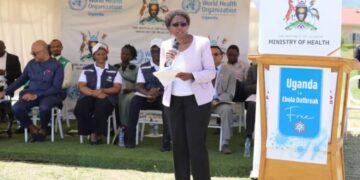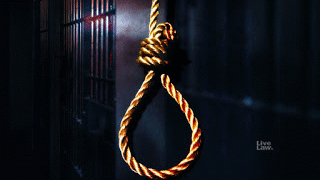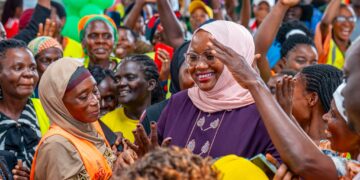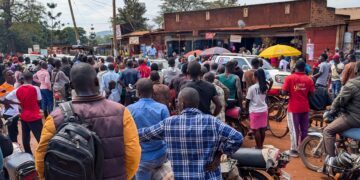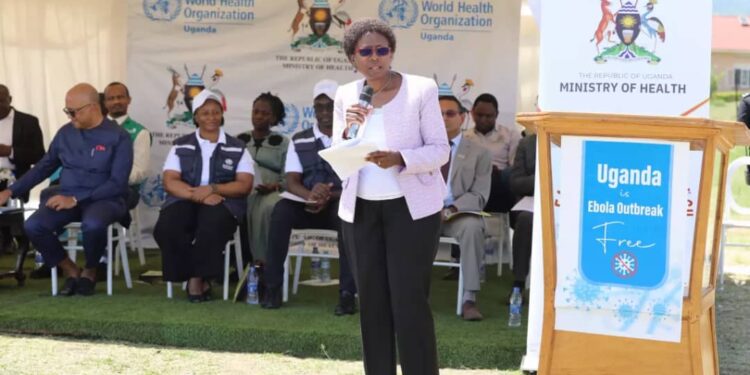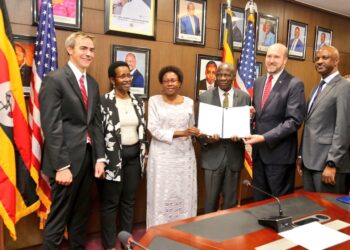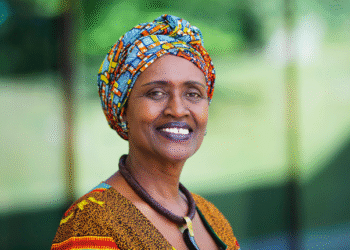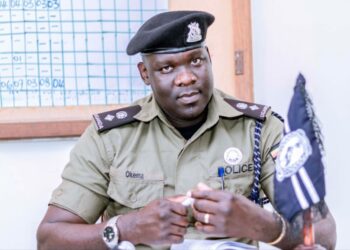HEALTH
BY JAEL NAMIGANDA
When the elder brother of Ramathan died of the dreaded Ebola virus disease, he was a worried man. He was the caregiver for his brother, a medical nurse, in the hospital where he was admitted after falling ill.
The hospital did not realize soon enough that the medical nurse was suffering from the killer Ebola virus, so he was not isolated. But when his condition deteriorated, further tests were done and Ramathan’s brother tested positive for Sudan Ebola Virus, which cut his life short.
This prompted the government to declare an outbreak, Ramathan, a 30-year-old teacher from Kampala, said. Thus, on January 30, 2025, Uganda’s Ministry of Health declared an outbreak of Sudan Ebola Virus Disease.
Things unfolded very fast after that, and ‘it was all systems go’, he remembers. Ramathan and his family members and everybody else who had come into contact with the diseased nurse were rounded up for isolation and testing for the Ebola virus.
“And in a swift move, on that fateful day, a medical emergency response team arrived at our home in Mbale. They took me and my two other family members to an isolation centre at Mulago National Referral Specialised Hospital in Kampala, where we also tested positive for the virus. We stayed there for three weeks for treatment before we were discharged after testing negative for the Ebola virus,” Ramathan said.
Ramathan and his siblings were among the 12 confirmed Ebola cases. It would turn out that that rapid response saved the country and its people from another round of deaths, destitution, and devastation by the deadly Ebola disease, for in less than three months, the Ministry declared Uganda free from the disease.
For a country that had primarily relied on foreign aid to manage and control similar outbreaks, this new public health scare emerged at a time when the United States Agency for International Development (USAID), a key partner in treating Ebola disease and slowing its spread, had stopped all funding for the global health and all of its other projects.
This caused public panic about how the country would manage the latest outbreak of a disease whose fatality rate ranged from 40%-100% in past outbreaks in Uganda and elsewhere in the Great Lakes region. Despite the challenge, Uganda ended the newest surge of the Sudan Ebola virus with minimal deaths and confirmed cases.
Ramathan became worried when the doctors told him that the disease had no known cure. “I had lost a brother and was in isolation. That was a bit traumatising,” he says. However, he adds that the good care he got at the Mulago isolation centre gave him hope.
He credits the medical team at the isolation centre for saving him and his other siblings from dying of Sudan Ebolavirus disease, saying the care and treatment they gave them was, ‘more than enough.”
According to Uganda’s Ministry of Health, there were 14 recorded cases, of which 12 were confirmed after laboratory tests, while the other two were probable. Unfortunately, two of the confirmed cases died, but 10 survived, according to the Ministry of Health records. Ramathan, who was among the lucky 10, says his brother would have lived too had his condition been detected early enough.
Even with significantly reduced funding, this year’s outbreak of the deadly Ebola virus disease ended in less than three months, according to the World Health Organisation (WHO), outperforming the previous September 2022 outbreak record that ended in about 69days and claimed more lives despite receiving more funding.
The financing of the 2025 outbreak was significantly smaller. Following President Donald Trump’s policy shift, the USAID was no longer involved, and the WHO was only able to raise $6.2 million from its partners.
The external funding for the containment of the September 2022 Ebola Disease outbreaks was USD 27 million. The USAID donated the bulk of the money, at USD 22.3 million.
Despite the massive funding, that particular outbreak recorded 164 confirmed cases and 77 deaths compared to only two deaths in 2025.
Dr Henry Bbosa Kyobe, the National Incident Commander for Epidemics in the Ministry of Health, who helped manage the Ebola Sudan outbreak, says, “The growing competency in outbreak response that Uganda has built over the years has played a significant role in reducing transmission and minimizing deaths.” However, he adds, early detection of Ebola Disease outbreaks is the actual challenge, because the goal is to prevent a single death.
“Once detected and the outbreak declared, we quickly activated the overall response mechanism put in place,” he says. These, he adds, included tracing of individuals, like Ramathan, who had been in contact with the first Ebola victim, who were spread in three populous districts of Kampala, Mbale, and Wakiso.
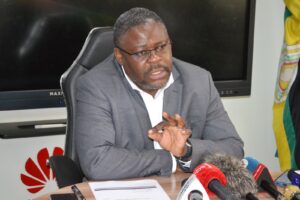
Dr Kyobe says that the use of modern tools, such as cell phone data for geospatial information, played a crucial role in understanding interactions. He also explains that adequate laboratory capacity was essential for testing and confirming cases, who were quickly isolated from the population and received treatment in isolation health centers.
He stated that for the first case, a blood sample was collected and sent to the Central Emergency Response and Surveillance Laboratory for analysis using real-time polymerase chain reaction (PCR), with results reported within less than 24 hours from the time of case identification.
The country has a network of facilities capable of performing these tests, which is a result of the significant expansion of laboratory capabilities during past disease outbreaks. This includes mobile labs during outbreaks in the districts to enhance testing capacity and expedite diagnosis, particularly in rural areas, he reiterated.
“Amongst the treatments given was remdesivir, a balanced stock from the 2022 outbreak, which was very effective in saving the lives of the 10 patients admitted at the treatment centres in January this year,” he says.
Dr Kyobe explains that apart from the missed early detection of the Ebola virus before any casualties, the other challenge with this particular outbreak was the lack of clarity on how the male nurse got infected.
“We don’t know how he got infected with the Ebola virus, unlike in previous outbreaks where index cases could be traced to individuals who had travelled to districts bordering countries that were experiencing Ebola outbreaks like the DRC,” he says.
Sumayiya (other name withheld on her request) tested positive for Sudan Ebola virus a few days after she returned to her home in Wakiso district from visiting her younger sister, who tested Ebola positive, in Kampala. She says her vomit and stool contained blood. She says that after a team from Kampala diagnosed her condition, she was isolated at Mulago Isolation Center for specialised treatment. “I thought I was going to die,’ she says, but the confirmation from the doctors that she was going to be okay consoled her.
Dr Deogratias Sekimpi, a public health expert and technical adviser at the Uganda National Association of Community and Occupational Health, a local non-governmental organisation, says he never doubted Uganda’s capacity to handle the latest Ebola outbreak, even with limited funding.
“Over the years since the first Ebola outbreak in the year 2000, Uganda has built the capacity, including a highly qualified technical team and the infrastructure, such as laboratories that would provide quick diagnosis,” he says.
Besides Mulago Hospital, Uganda has other fully equipped emergency health outbreak isolation centers in Njinja, Mbale, and Porthall.
Sekimpi acknowledges that money is a key factor in emergency outbreaks, but an organized, skilled, and fast response is more critical. “With Uganda’s past experiences in handling previous outbreaks, a lot of knowledge was acquired, and that shaped the kind of response we see today with fewer deaths recorded with newer outbreaks,” Dr Sekimpi says.
According to the WHO, border health measures at points of entry were reinforced to prevent cross-border transmission. To control the spread, 129 national and international staff were mobilized to support the response in areas such as case investigations, contact tracing, and management, resulting in the testing of more than 1,500 samples.
In addition, “a randomised clinical trial for vaccine safety and efficacy using a ring vaccination approach was launched within four days of the government’s declaration of the outbreak, despite the unavailability of a licensed countermeasure against the Sudan Ebola Virus, WHO says.
Dr. ChikweIhekweazu, the Acting WHO Regional Director for Africa, described the outbreak as challenging in “many ways… and unfolded against the background of significant global funding constraints,” acknowledging Uganda’s long-standing leadership in tackling public health emergencies.
Ramathan fearedbeing stigmatized by his community upon his release. “However, when I left the hospital, I wasn’t treated any differently. I wasn’t stigmatised because people are now educated and informed on several things,” he says.
Whereas it is impossible to prevent future Ebola outbreaks, adequate containment measures and rapid responses by international partners, as demonstrated by the Uganda case study, can save lives.
